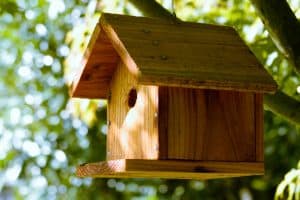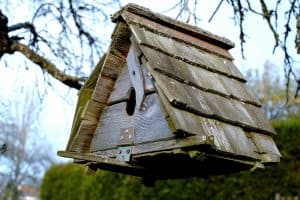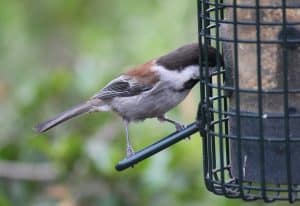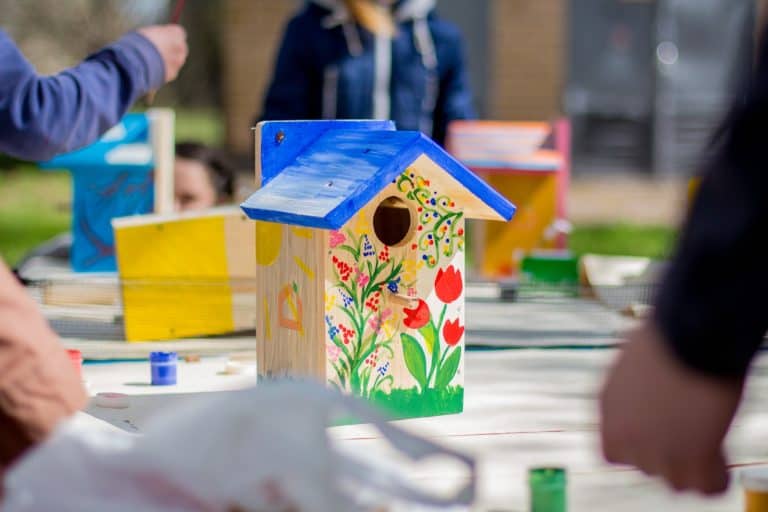Welcome to the world of birdhouse installation for beginners! If you’re looking to attract beautiful feathered friends to your backyard, you’ve come to the right place. In this comprehensive guide, we’ll explore the fascinating world of birdhouses and provide you with step-by-step instructions to create a welcoming environment for nesting birds.
Why Install Birdhouses?
Before we dive into the details of installing birdhouses, let’s understand why it’s such a rewarding activity. Installing birdhouses not only adds aesthetic value to your backyard but also provides a safe haven for many bird species. By setting up these nesting boxes, you’ll have the opportunity to observe a wide variety of bird species, from house wrens to chickadees. Plus, it’s an educational experience for both young and old bird enthusiasts.
Types of Birdhouses

Selecting the right type of birdhouse is a crucial first step in your birdhouse installation journey. Birdhouses come in a multitude of styles, each with its unique charm and purpose. From classic wooden designs that exude rustic charm to brick birdhouses that add an architectural touch to your garden, you have a wide range to choose from. Some creative enthusiasts even fashion birdhouses from natural materials like tree branches, integrating seamlessly with the environment.
The size and design of your chosen birdhouse are not just about aesthetics; they play a vital role in attracting specific bird species. For instance, cavity-nesting birds like bluebirds and chickadees may prefer a smaller, cozy space, while larger birds like owls or wood ducks will need more spacious abodes. It’s essential to consider the preferences of the local bird species you want to attract, as the right birdhouse can make your garden a sought-after destination for feathered friends.
Essential Tools and Materials
To begin your beginner birdhouse setup, gather the essential tools and materials. You’ll need a Philips head screwdriver, wood glue, and exterior paint for decoration. These basic materials, along with the birdhouse kit, are usually available at your local hardware store. Safety precautions are important; ensure you have all the necessary tools before starting your project.
Location, Location, Location

Selecting the right location for your birdhouse is a pivotal step in ensuring the success of your birdhouse installation. Birds are particular about where they choose to nest, and a well-chosen location can make your yard an attractive nesting site for various bird species. When positioning your birdhouse, consider the prevailing winds and opt for a sheltered spot to shield the nest from harsh weather conditions.
Adequate sunlight is also crucial, as it aids in regulating the temperature inside the birdhouse. Furthermore, keeping an eye out for potential predators and choosing a location that offers some protection will make your nesting box more secure for the resident birds. Whether you place it on a tree trunk, fence post, or brick wall, the ideal location ensures your birdhouse is a desirable and safe nesting spot for our feathered friends.
Assembling the Birdhouse
With your tools and materials ready, it’s time to assemble your birdhouse. Follow our step-by-step instructions to put it together securely. This involves attaching the front board, back wall, side walls, and roof. Don’t forget to create an entrance hole suitable for the bird species you want to attract. Once assembled, you can decorate your birdhouse with exterior paint to make it visually appealing.
Mounting Your Birdhouse
Mounting your birdhouse properly is crucial for attracting nesting birds. You can choose various mounting methods, including hanging birdhouses on a tree branch, attaching them to a pole, or securing them on fence posts. The height and orientation of the birdhouse also play a role in its success. By following our instructions, you’ll ensure that your birdhouse is safe from predators and accessible to your feathered friends.
Maintaining Your Birdhouse

Regular maintenance is key to ensuring that your birdhouse remains a welcoming and safe haven for birds. To maintain your birdhouse, periodic cleaning is essential. After the nesting season, it’s a good practice to remove old nests, debris, and any accumulated dirt. This not only keeps the house hygienic but also creates a fresh and inviting environment for new bird families in the following seasons.
Monitoring bird activity is an enjoyable aspect of maintaining your birdhouse. By observing the comings and goings of the feathered residents, you can gain insight into the behavior and habits of local bird species. Additionally, be vigilant about the structural integrity of the birdhouse. If you notice any damage or wear and tear, make the necessary repairs promptly to ensure the safety of the nesting birds.
Attracting Birds to Your New Home
To attract birds to your birdhouse, consider providing food and water sources in your yard. Planting bird-friendly flora will also entice various bird species to your space. This section will guide you in creating an environment that encourages birds to nest and return year after year.
Nesting Box Installation Tips
Now that you’ve decided to set up a birdhouse, it’s important to pay attention to the specific needs of the bird species you want to attract. Different birds have varying preferences for nesting boxes, so it’s crucial to tailor your installation to their needs. For instance, cavity nesting birds, such as bluebirds and chickadees, have different requirements compared to ground-nesting birds like robins.
When installing nesting boxes, consider the following:
- Size and Shape: Different bird species have different space requirements. Make sure the size and shape of the nesting box are appropriate for the birds you want to attract.
- Entrance Hole Diameter: The size of the entrance hole is critical. Be sure it aligns with the preferences of your target birds. For instance, a smaller hole may attract wrens, while a larger hole may accommodate bluebirds.
- Height: The height at which you place your birdhouse is equally important. Some birds prefer higher locations, while others feel safer closer to the ground.
Attracting Birds with Bird Feeders

In addition to setting up birdhouses, another great way to attract birds to your yard is by installing bird feeders. Bird feeders complement your birdhouse installation and offer a supplementary source of food for our feathered friends.
Bird feeders come in various designs, including platform feeders, hopper feeders, and tube feeders. You can place them strategically in your yard, providing a reliable food source for birds of all species, including young birds just out of the nest.
To further encourage birds to your yard, make sure to stock your bird feeders with a variety of birdseed mixes that cater to different bird species. For example, some species prefer sunflower seeds, while others may enjoy millet or suet. Experiment with various feeds to see what attracts the most birds to your yard.
Mounting Birdhouses on Metal Poles
When mounting birdhouses, you have several options, and one of the sturdiest choices is using metal poles. These poles provide a secure and durable foundation for your birdhouses, ensuring they remain in place even during adverse weather conditions.
To mount your birdhouse on a metal pole, you will need the following:
- A metal pole that is long enough to securely anchor your birdhouse.
- A screw-on birdhouse bracket designed to fit the pole.
- A birdhouse that has the appropriate bracket attachment.
Begin by selecting a suitable location in your yard, ensuring it’s clear of any obstacles and predators. Dig a hole deep enough to accommodate the metal pole, and then insert it firmly into the ground. Make sure it’s stable and level.
Attach the screw-on birdhouse bracket to the top of the metal pole. Then, securely fasten your birdhouse to the bracket, ensuring it’s level and positioned at the right height for your target bird species.
This method offers a reliable and long-lasting mounting solution, ensuring that your birdhouse remains a safe and welcoming space for birds throughout the seasons.
Final Thoughts: Birdhouse Installation for Beginners
In conclusion, birdhouse installation for beginners is a delightful and educational experience. By following our detailed steps, you can create a welcoming home for a wide range of bird species. Whether you’re interested in observing wrens, chickadees, or other birds, birdhouses are a fantastic way to invite these feathered friends into your backyard. Get started on your birdhouse building journey and watch your backyard come to life with the sounds and sights of these wonderful creatures. Happy birdhouse installation!
Other suggested articles:


